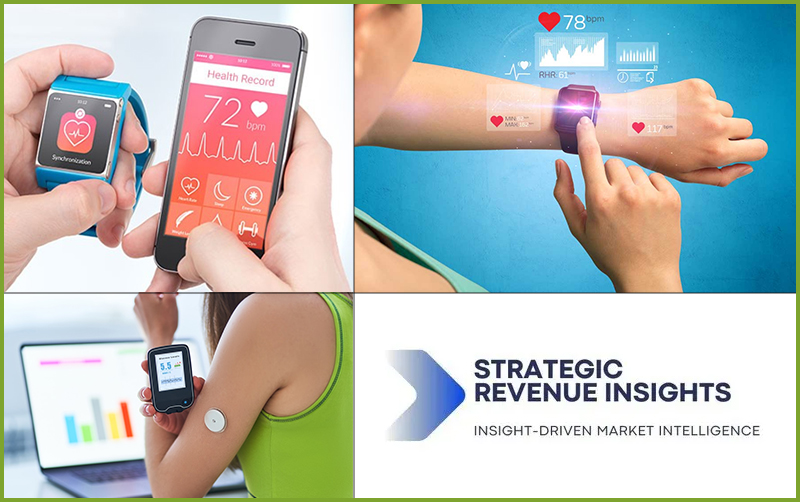
Wearable Medical Devices Market Will reach $184.75 billion by 2033: Strategic Revenue Insights
19 November 2025: Global Wearable Medical Devices Market was valued at $42.1 billion in 2024 and is projected to reach $184.75 billion by 2033, driven by rapid consumer adoption, healthcare digitalization, and the integration of intelligent monitoring technologies. As chronic disease cases escalate and preventive healthcare gains priority worldwide, wearable devices have moved from lifestyle accessories to clinically relevant diagnostic and monitoring tools.
This surge is also being fuelled by a fundamental shift in patient expectations. Individuals want more visibility into their own health metrics, and healthcare systems-facing workforce shortages and rising costs-need technologies that improve monitoring efficiency without compromising care quality. Against this backdrop, wearable medical devices have emerged as a cornerstone of the modern healthcare ecosystem, offering unprecedented data precision, clinical relevance and accessibility.
Market Trends
The first and most visible trend is the consumerization of healthcare, where health monitoring is no longer confined to hospital settings. Smartwatches, biosensors, and portable blood pressure monitors are being used routinely by individuals who seek continuous insights into cardiovascular health, sleep quality, stress levels, or overall fitness. This shift has broadened the industry’s addressable market while deepening the overlap between healthcare and consumer electronics.
Another emerging trend is the expansion of remote patient monitoring (RPM). Since the COVID-19 pandemic accelerated telehealth adoption, healthcare providers increasingly rely on wearable devices to track vital signs, medication adherence, and post-operative recovery. As payers begin integrating RPM into reimbursement programs, demand is rising for devices that offer clinical-grade accuracy alongside user-friendly interfaces.
Sustainability-driven design has also become a notable trend. Manufacturers are exploring recyclable casings, low-energy sensors, and modular components to improve device longevity. In parallel, wearable devices are transitioning from basic trackers to more advanced systems capable of multi-parameter monitoring-such as continuous ECG, arrhythmia detection, glucose tracking, and oxygen saturation analysis.
Technological Advancements
Technological innovation remains the defining driver of the wearable medical devices market. The integration of artificial intelligence, machine learning, IoT connectivity, miniaturized sensors, and advanced analytics has elevated device accuracy and clinical value.
A major advancement is the evolution of biosensor technology. Biosensors are becoming smaller, more energy-efficient, and capable of capturing biochemical, physiological, and biomechanical signals in real-time. This is revolutionizing areas like glucose monitoring, cardiac diagnostics, and early disease detection. Such capabilities bridge the gap between traditional medical devices and modern consumer tech.
Battery innovation has also played a critical role. Longer-lasting, fast-charging batteries have enabled devices to run continuous monitoring without frequent interruptions. Meanwhile, flexible electronics and skin-adhesive materials are transforming how wearables are worn-moving from wrist-based devices to patches, smart textiles and implantable sensors.
Interoperability improvements have further accelerated adoption. Modern wearables seamlessly integrate with electronic health record (EHR) systems, allowing clinicians to access patient data without manual entry. Bluetooth Low Energy (BLE), 5G connectivity, and cloud-based platforms ensure uninterrupted data transmission between device, user and care provider.
The convergence of these technologies is cultivating an ecosystem where wearable devices function as round-the-clock health monitors, decision-support tools, and prevention enablers.
Sustainability Challenges
Despite strong growth, the wearable medical devices industry faces pressing sustainability challenges. One of the most significant concerns is electronic waste (e-waste). Wearable devices contribute to the nearly 60 million metric tons of global e-waste generated annually, with batteries, sensors, and circuit boards posing particular disposal risks. As the industry expands, these concerns are becoming more pronounced.
Studies indicate that less than 20% of global e-waste is formally recycled, raising questions about the lifecycle management of wearable devices. The environmental impact is magnified by short upgrade cycles, especially for consumer-grade wearables, where new models are released frequently, prompting early replacement.
Manufacturers are responding by investing in eco-friendly materials, modular designs, and recycling programs. Several companies are testing biodegradable casings, energy-efficient chips and reusable sensor modules. Smartwatches and medical sensors designed with replaceable components are gradually entering the market, helping extend product life and reduce waste generation.
https://www.strategicrevenueinsights.com/industry/wearable-medical-devices-market.






